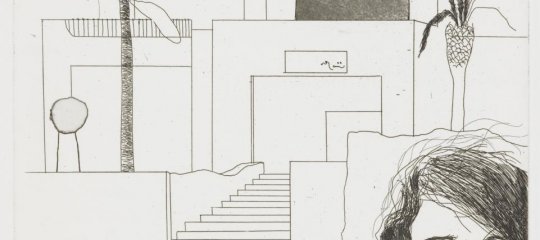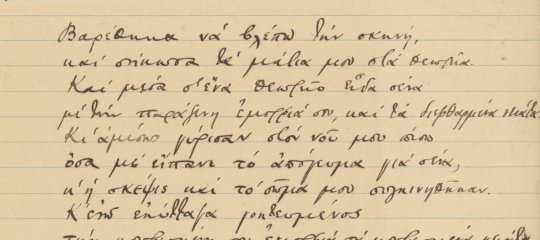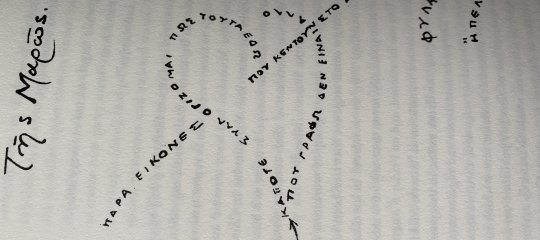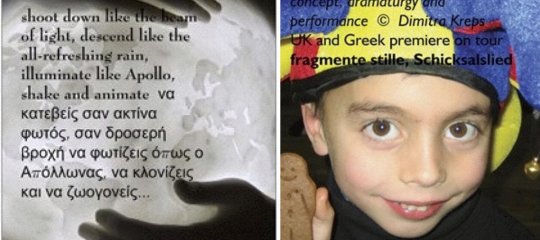Η παρουσίαση των εισηγήσεων
Όπως είχα υποσχεθεί και μια και βλέπω ότι προσπαθούμε να περάσουμε στις Φρυκτωρίες τα πεπραγμένα της συνάντησης της Θεσσαλονίκης, στέλνω την πρότασή μου για την παρουσίαση των δεδομένων.
Γεωργία Κατσέλου
3 Οκτωβρίου 2005
Στη διαδικασία που ακολουθήθηκε, εγώ τουλάχιστον, διέκρινα τέσσερεις θεματικούς άξονες γύρω από τους οποίους κινήθηκε η συζήτηση.
- Α. Εκπαιδευτικό ίδρυμα στο οποίο είμαστε αποσπασμένοι – Θέση και οργάνωση των νεοελληνικών σπουδών στα πλαίσια του ιδρύματος.
- Β. Διδακτικά καθήκοντα των αποσπασμένων
- Γ. Ειδικότερες διδακτικές προτάσεις
- Δ. Παράπλευρες δραστηριότητες (π.χ. συνεργασία με ομογενειακούς φορείς (Αμερική), τηλεδιδασκαλία της ελληνικής (Αυστραλία)
Πιστεύω ότι μια τέτοια διάρθρωση θα βοηθήσει στο να βρίσκονται άμεσα και απρόσκοπτα οι πληροφορίες που αναζητάμε σχετικά τόσο με τις συγκεκριμένες παρεμβάσεις των συναδέλφων όσο και γενικότερα με τις νεοελληνικές σπουδές στο κάθε ίδρυμα.
Στη συνέχεια προτείνω ενδεικτικά ένα τρόπο οργάνωσης του υλικού, κυρίως για τους δύο πρώτους άξονες, που βέβαια δεν θα έχει δεσμευτικό χαρακτήρα αλλά θα μπορεί να προσαρμοστεί στην κάθε περίπτωση.
Α. ΠΛΗΡΟΦΟΡΙΕΣ ΓΙΑ ΤΟ ΕΚΠΑΙΔΕΥΤΙΚΟ ΙΔΡΥΜΑ
-ΟΡΓΑΝΩΣΗ ΤΩΝ ΝΕΟΕΛΛΗΝΙΚΩΝ ΣΠΟΥΔΩΝ
1.ΟΡΓΑΝΩΤΙΚΉ ΔΟΜΗ
Α. Πανεπιστημιακό ίδρυμα:
Β. Σχολή:
Γ. Τμήμα:
Δ. Κέντρο εκμάθησης ξένων γλωσσών:
2.ΙΣΤΟΡΙΚΟ
3.ΠΡΟΫΠΟΘΕΣΕΙΣ ΕΓΓΡΑΦΗΣ ΣΤΟ ΤΜΗΜΑ (εισαγωγικές εξετάσεις κλπ)
4.ΠΡΟΓΡΑΜΜΑ ΣΠΟΥΔΩΝ (ανά έτος)
5.ΠΡΟΑΙΡΕΤΙΚΑ ΜΑΘΗΜΑΤΑ
6.ΔΙΔΑΚΤΙΚΗ ΜΕΘΟΔΟΣ
7.ΕΞΕΤΑΣΤΙΚΕΣ ΔΙΑΔΙΚΑΣΙΕΣ
8.ΔΙΔΑΣΚΟΝΤΕΣ
9.ΦΟΙΤΗΤΕΣ
10.ΥΛΙΚΟΤΕΧΝΙΚΗ ΥΠΟΔΟΜΗ (βιβλιοθήκη, εργαστήρια)
11.ΠΤΥΧΙΟ
12.ΕΠΑΓΓΕΛΜΑΤΙΚΕΣ ΠΡΟΟΠΤΙΚΕΣ
13.ΜΕΤΑΠΤΥΧΙΑΚΑ
Β. ΕΚΠΑΙΔΕΥΤΙΚΑ ΚΑΘΗΚΟΝΤΑ ΤΩΝ ΑΠΟΣΠΑΣΜΕΝΩΝ
1.Έτος σπουδών
2.Αντικείμενο διδασκαλίας
3.Γλώσσα διδασκαλίας
4.Ώρες διδασκαλίας εβδομαδιαίως
5.Μέθοδος διδασκαλίας
Φυσικά οι φόρμες αυτές μπορούν να προσαρμοστούν και να βελτιωθούν ανάλογα.
Γεωργία Κατσέλου
- Εμείς /
- Εισέλθετε στο σύστημα για να υποβάλετε σχόλια










